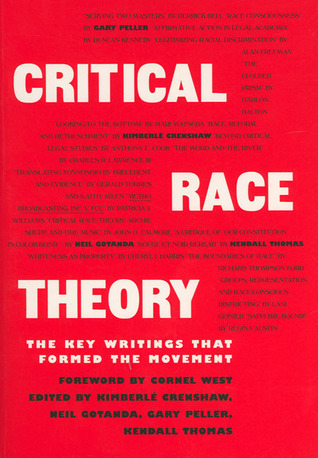What do you think?
Rate this book


528 pages, Paperback
First published May 1, 1996
i am outside of history.
i wish i had some peanuts,
it looks hungry there in its cage.
i am inside of history.
its hungrier than i thot.* — Ishmael Reed
Tushnet: (1) Once one identifies what counts as a right in a specific setting, it invariably turns out that the right is unstable; significant but relatively small changes in the social setting can make it difficult to sustain the claim that a right remains implicated. (2) The claim that a right is implicated in some settings produces no determinate consequences. (3) The concept of rights falsely converts into an empty abstraction (reifies) real experiences that we ought to value for their own sake. (4) The use of rights in contemporary discourse impedes advances by progressive social forces . . ."
Crenshaw: "The commitment of CLS scholars to trashing is premised on a notion that people are mystified by liberal legal ideology and consequently cannot remake their world until they see how contingent such ideology is. However, this version of domination by consent does not present a realistic picture of racial domination. Coercion explains much more about racial domination than does ideologically induced consent.”
-->In addition to exaggerating the role of liberal legal consciousness and underestimating that of coercion, CLS scholars also disregard the transformative potential that liberalism offers
-->" Civil rights protestors, articulating their formal demands through legal rights ideology, exposed a series of contradictions, the most important being the promised privileges of American citizenship and the practice of absolute racial subordination. Rather than using the contradictions to suggest that American citizenship was itself illegitimate or false, civil rights protestors proceeded as if American citizenship were real and demanded to exercise the “rights” that citizenship entailed. By seeking to restructure reality to reflect American mythology, blacks relied upon and ultimately benefited from politically inspired efforts to resolve the contradictions by granting formal right"
-->" On the other hand, Peter Gabel may well be right in observing that the reforms which come from such demands are likely to transform a given situation only to the extent necessary to legitimate those elements of the situation that “must” remain unchanged. Thus, it might just be the case that oppression means “being between a rock and a hard place’—in other words, that there are risks and dangers involved both in engaging in the dominant discourse and in failing to do so"
From Derrida: "Western thought [...] has always been structured in terms of dichotomies or polarities: good vs. evil, being vs. nothingness, identity vs. difference, mind vs. matter, man vs. woman, nature vs. culture, speech vs. writing. These polar opposites do not, however, stand as independent and equal entities. The second term in each pair is considered the negative, corrupt, un-dersirable version of the first, a fall away from it. . . . The two terms are not simply opposed in their meanings, but are arranged in a hierarchical order which gives the first term priority . . . "